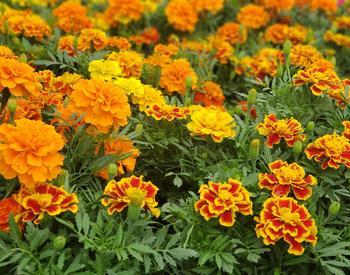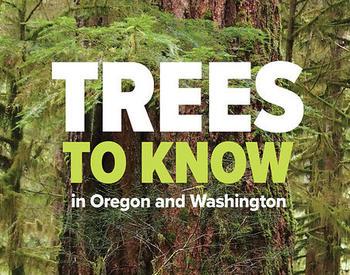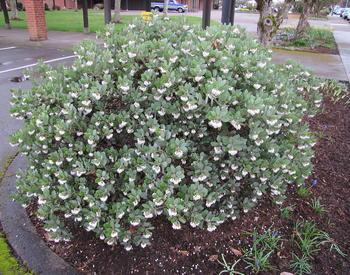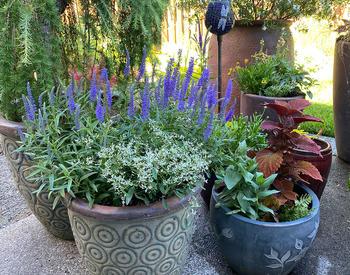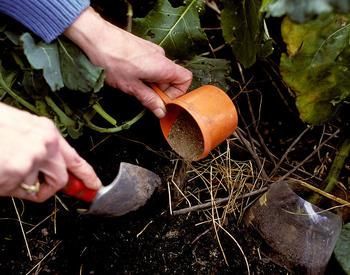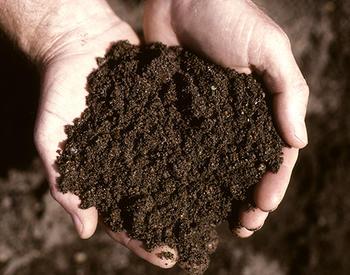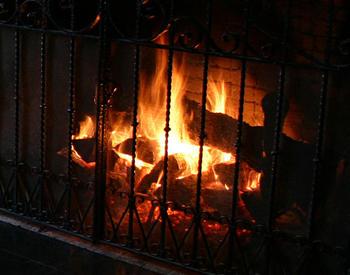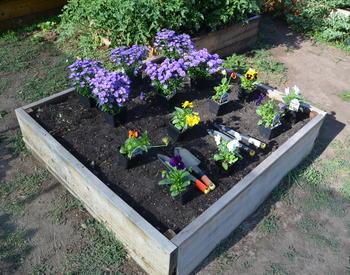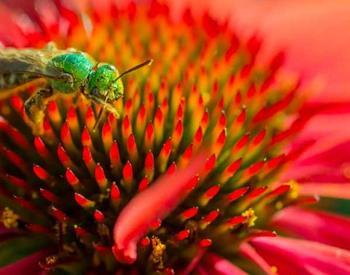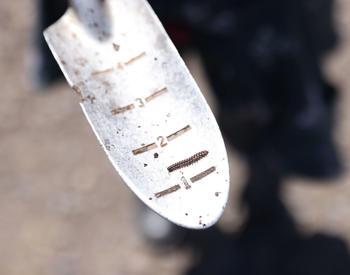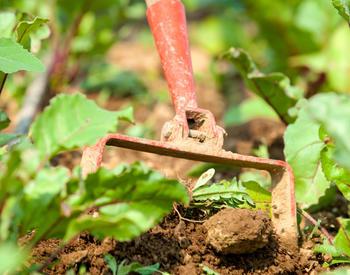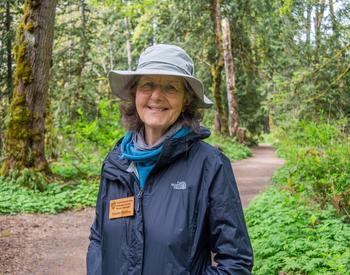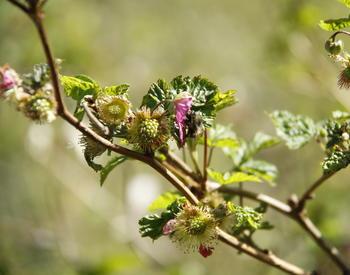Is your yard ready to be an "Oregon Sustainable Landscape"?
Water Efficiently
- Design a WaterWise landscape that does not need water after plants become established. These landscapes often use native plants.
- Group plants in the landscape by irrigation need.
- Mow lawns at proper height for attractive turf, encouraging a deeper and more drought tolerant root system: bentgrass 1", perennial rye 2", fescue 2"
- Calibrate sprinkler system to apply 3/4 ” to 1" of water with each application.
- Have a rain gauge to track irrigation amounts.
- Do not start in-ground irrigation systems too early in spring. Shut off the system in fall.
- Use drip or micro-sprinkler systems where practical.
Mulch
- Maintain a 2-3" layer of organic mulch over tree roots, around shrubs, and over plant beds, while leaving a 2" space between plant stems or trunks & the mulch.
- Create self mulching areas under trees and shrubs where leaves can remain. Use by-product mulches like fir bark or recycled mulches.
- Replenish mulches when needed to maintain the 2-3" depth.
Recycle
- Recycle grass clippings by leaving them on the lawn.
- Use your leaves or conifer needles as mulch.
- Create and maintain a compost pile with yard trimmings, leaves, kitchen scraps.
- Don't burn yard waste. Recycle organic material into mulch or compost.
- Use a push or non-gas powered mower.
- Use hand tools for raking, edging, and pruning.
Wildlife
- Plant vines, shrubs and trees to provide cover, nesting sites and food for birds, pollinators and other wildlife.
- Provide a water source such as a birdbath or a small pond for wildlife.
- Provide wildlife shelters such as a bat house, bird house, or brush pile.
- Identify five kinds of wildlife ( birds, reptiles, insects ) that live in your yard.
Yard pests
- Learn to identify 5 beneficial insects that provide natural control of harmful pests.
- Check your landscape weekly for signs of problems.
- Know primary pests of your plants and when to target these pests. Avoid indiscriminate spraying.
- Use non-chemical approaches to control pest such as pruning to improve air circulation, hand removal of insects, sanitation, and planting disease resistant plants.
- If necessary, use environmentally friendly pesticides such as insecticidal soaps and horticultural oils as your first choice.
- Store pesticides in a water tight container away from kids. Never leave sprayers filled with pesticides . Always read the label.
Edible landscape
- Grow fruit
- Grow vegetables
- Utilizes land for meat , egg, honey, or milk production
- Grow grains or dried beans
- Save seeds for future use
Fertilizing
- Create healthy soil with compost.
- Fertilize to maintain healthy plants; do not promote excessive growth that attracts insects.
- Use natural organic or other slow release fertilizers.
Stormwater runoff
- Direct downspouts and gutters to drain onto the lawn, plant beds, or containment areas away from foundations.
- Use groundcovers or mulch on thinly vegetated areas to decrease erosion.
- Use porous surfaces for walkways, patios and driveways.
- Collect and use rainwater to irrigate plants.
- Create swales and terraces to catch or filter rainfall.
- Pick up after pets in your yard and on walks to reduce bacterial and nutrient pollution in storm drain systems.
- Clean up oil spills and leaks with cat litter.
- Sweep grass clippings, fertilizer, and soil from driveways onto the lawn. Remove yard waste from street gutters.
Stream side
- Remove invasive exotic plants in riparian areas.
- Establish or maintain a border of low maintenance plants between your lawn and the stream side to absorb nutrients and hold the soil during times of high water.
- Establish a 30 to 60 foot "no fertilizer zone" along your riparian area.
- Know what pesticides are toxic to fish and should not be used near riparian areas.
Right plant, right place
- Ensure the landscape does not contain plants identified by legal code as invasive. ( English Ivy, Butterfly Bush )
- Replace problem prone plants with low maintenance natives or non-natives.
- Create landscapes that are drought tolerant on the perimeter and more moisture loving near activity areas of the home.
- Determine how much lawn you need to water for pets, children, and recreation. Let the other turf areas dry out in summer.
- Use trees and shrubs to shade the east and west walls of your home.
- Use deciduous trees on south and west exposures to shade your home in summer and allow solar heating in winter.
- Reduce yard waste by using plants that don't require frequent pruning at maturity.
- Preserve native trees when building on a new site. Maintain an undisturbed area under the tree out to at least the drip line.

